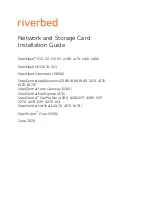
2.9.1.1
Enabling Transfer Completion Interrupts
EDMA3 Interrupts
www.ti.com
Table 2-13. Transfer Complete Code (TCC) to EDMA3CC Interrupt Mapping
TCC Bits in OPT
TCC Bits in OPT
(TCINTEN/ITCINTEN = 1)
IPR Bit Set
(TCINTEN/ITCINTEN = 1)
IPRH Bit Set
(1)
00 0000b
IPR0
10 0000b
IPR32/IPRH0
00 0001b
IPR1
10 0001b
IPR33/IPRH1
00 0010b
IPR2
10 0010b
IPR34/IPRH2
00 0011b
IPR3
10 0011b
IPR35/IPRH3
00 0100b
IPR4
10 0100b
IPR36/IPRH4
…
…
…
…
…
…
…
…
01 1110b
IPR30
11 1110b
IPR62/IPRH30
01 1111b
IPR31
11 1111b
IPR63/IPRH31
(1)
Bit fields IPR[32-63] correspond to bits 0 to 31 in IPRH, respectively.
You can enable Interrupt generation at either final transfer completion or intermediate transfer completion,
or both. Consider channel
m
as an example.
•
If the final transfer interrupt (TCINTEN = 1 and ITCINTEN = 0 in OPT) is enabled, the interrupt occurs
after the
last
transfer request of channel
m
is either submitted or completed (depending on early or
normal completion).
•
If the intermediate transfer interrupt (TCINTEN = 0 and ITCINTEN = 1 in OPT) is enabled, the interrupt
occurs after every
intermediate
transfer request of channel
m
is either submitted or completed
(depending on early or normal completion).
•
If both final and intermediate transfer completion interrupts (TCINTEN = 1 and ITCINTEN = 1 in OPT)
are enabled, the interrupt occurs after
every
transfer request of channel
m
is submitted or completed
(depending on early or normal completion).
shows the number of interrupts occurring in different synchronized scenarios. Consider
channel 31 programmed with ACNT = 3, BCNT = 4, CCNT = 5, and TCC = 30.
Table 2-14. Number of Interrupts
Options
A-Synchronized
AB-Synchronized
TCINTEN = 1, ITCINTEN = 0
1 (Last TR)
1 (Last TR)
TCINTEN = 0, ITCINTEN = 1
19 (All but the last TR)
4 (All but the last TR)
TCINTEN = 1, ITCINTEN = 1
20 (All TRs)
5 (All TRs)
For the EDMA3 channel controller to assert a transfer completion to the external world, the interrupts have
to be enabled in the EDMA3CC. This is in addition to setting up the TCINTEN and ITCINTEN bits in OPT
of the associated PaRAM set.
The EDMA3 channel controller has interrupt enable registers (IER/IERH) and each bit location in
IER/IERH serves as a primary enable for the corresponding interrupt pending registers (IPR/IPRH).
All the interrupt registers (IER, IESR, IECR, and IPR) are either manipulated from the global DMA channel
region or by way of the DMA channel shadow regions. The shadow regions provide a view to the same
set of physical registers that are in the global region.
The EDMA3 channel controller has a hierarchical completion interrupt scheme that makes use of a single
set of interrupt pending registers (IPR/IPRH) and single set of interrupt enable registers (IER/IERH). A
second level of interrupt masking is provided by the programmable DMA region access enable registers
(DRAE/DRAEH) for asserting the completion interrupts. See
50
EDMA3 Architecture
SPRUG34 – November 2008
Summary of Contents for TMS320DM357
Page 2: ...2 SPRUG34 November 2008 Submit Documentation Feedback ...
Page 12: ...List of Tables 12 SPRUG34 November 2008 Submit Documentation Feedback ...
Page 16: ...Read This First 16 SPRUG34 November 2008 Submit Documentation Feedback ...
Page 64: ...EDMA3 Architecture 64 SPRUG34 November 2008 Submit Documentation Feedback ...
















































